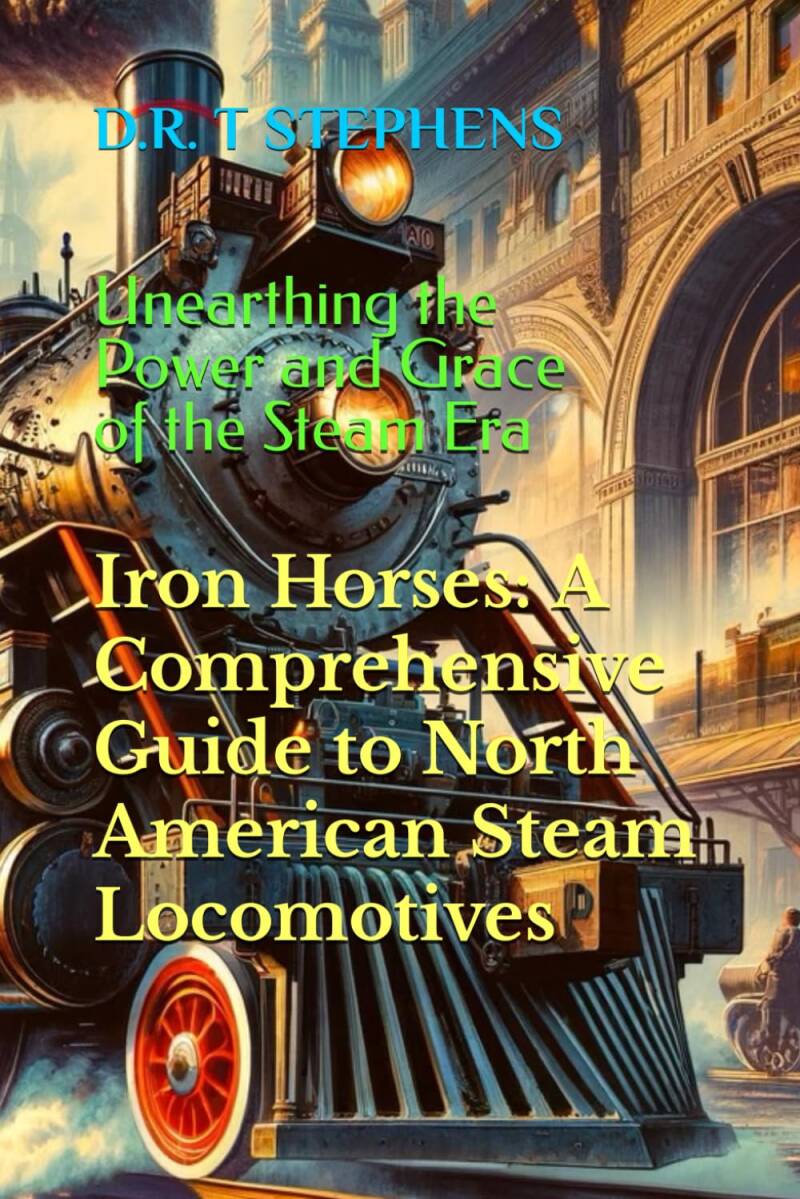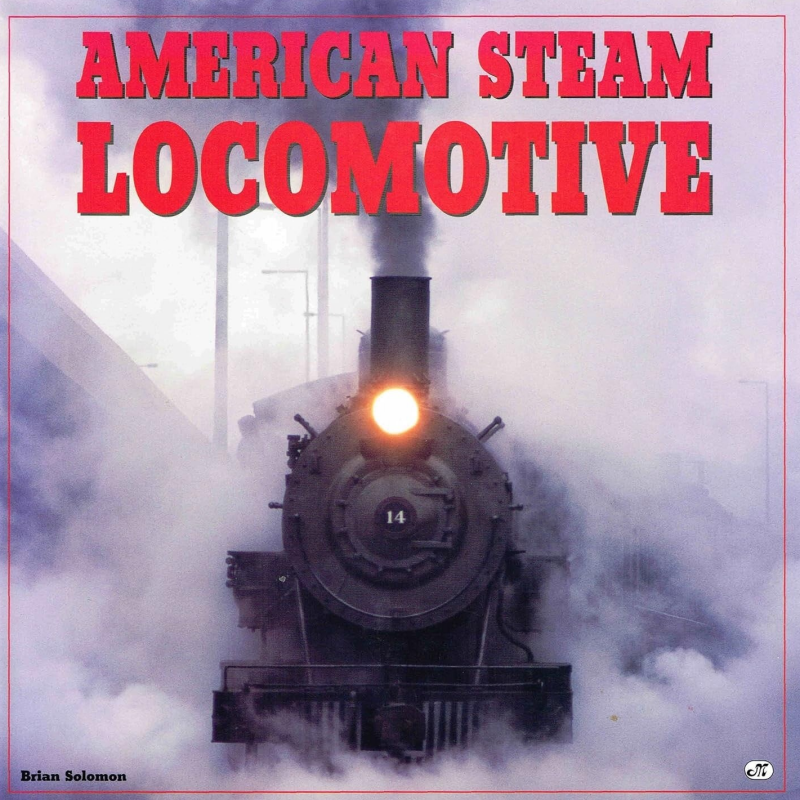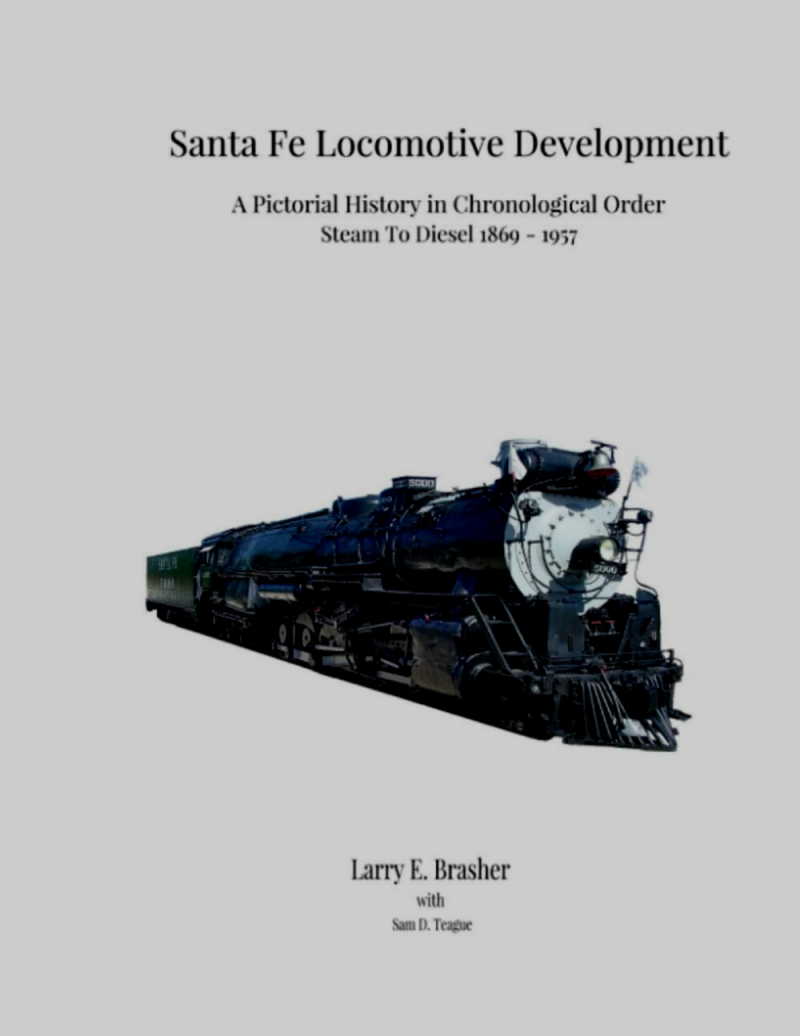A postcard photo of the Baltimore and Ohio train The Cincinnatian when it was a streamlined steam locomotive, July 1956.
The locomotive shown is No. 5301, "The President Adams", a 4-6-2 Pacific style locomotive.
(Image: Audio-Visual Designs, New Providence, NJ. Photographer: Don Wood, Public domain, via Wikimedia Commons)
STEAM LOCOMOTIVES
A steam locomotive is a locomotive that provides the force to move itself and other vehicles by means of the expansion of steam. It is fueled by burning combustible material (usually coal, oil or, rarely, wood) to heat water in the locomotive's boiler to the point where it becomes gaseous and its volume increases 1,700 times. Functionally, it is a steam engine on wheels.
In most locomotives, the steam is admitted alternately to each end of its cylinders in which pistons are mechanically connected to the locomotive's main wheels. Fuel and water supplies are usually carried with the locomotive, either on the locomotive itself or in a tender coupled to it. Variations in this general design include electrically-powered boilers, turbines in place of pistons, and using steam generated externally.
Use in the United States
Before the arrival of British imports, some domestic steam locomotive prototypes were built and tested in the United States, including John Fitch's miniature prototype. A prominent full sized example was Col. John Steven's "steam wagon" which was demonstrated on a loop of track in Hoboken, New Jersey in 1825.
Many of the earliest locomotives for commercial use on American railroads were imported from Great Britain, including first the Stourbridge Lion and later the John Bull. However, a domestic locomotive-manufacturing industry was soon established. In 1830, the Baltimore and Ohio Railroad's Tom Thumb, designed by Peter Cooper, was the first commercial US-built locomotive to run in America; it was intended as a demonstration of the potential of steam traction rather than as a revenue-earning locomotive. The DeWitt Clinton, built in 1831 for the Mohawk and Hudson Railroad, was a notable early locomotive.
As of 2021, the original John Bull was on static display in the National Museum of American History in Washington, D.C. The replica is preserved at the Railroad Museum of Pennsylvania.
Whyte Steam Locomotive Classification System
Whyte notation is a classification method for steam locomotives, and some internal combustion locomotives and electric locomotives, by wheel arrangement. It was devised by Frederick Methvan Whyte, and came into use in the early twentieth century following a December 1900 editorial in American Engineer and Railroad Journal.
The notation was adopted and remains in use in North America and the United Kingdom to describe the wheel arrangements of steam locomotives, but for modern locomotives, multiple units and trams it has been supplanted by the AAR system in North America.
The Golden Age of Steam | Trains Unlimited (S1, E6) | Full Episode
Until the diesel age, trains were powered by steam, and we'll trace the steam train's 160-year history. See more in Season 1, Episode 6, "Steam Trains."
An excellent documentary.
Common wheel arrangements - Whyte Notation
The most common wheel arrangements are listed below. The front of the locomotive is to the left.
Whyte classification / Name(s) / No. of units produced
A. Non-articulated locomotives
0-2-2 Northumbrian
2-2-0 Planet
2-2-2 Patentee, Single, Jenny Lind
2-2-4 Aerolite
4-2-0 Jervis
4-2-2 , Single
4-2-4 Huntington
6-2-0 Crampton
0-4-0 Four-coupled
0-4-0+4 Four-coupled as used on railmotors
0-4-2 Olomana
0-4-4 Forney
2-4-0 Porter, 'Old English'
2-4-2 Columbia
2-4-4 Boston
4-4-0 American, eight-wheeler
4-4-2 Atlantic
4-4-4 Reading, Jubilee (Canada)
0-6-0 Six-coupled, Bourbonnais (France)
0-6-2 Branchliner, Webb
0-6-4 Forney six-coupled
0-6-6
0-6-6-0 Fairlie
2-6-0 Mogul / 11,000
2-6-2 Prairie
2-6-4 Adriatic
2-6-6 Suburban
4-6-0 Ten-wheeler
4-6-2 Pacific / 6,800
4-6-4 Hudson, Baltic
4-6-6 Used on the Boston and Albany Railroad.
0-8-0 Eight-coupled
0-8-2 River Irt
0-8-4 London
2-8-0 Consolidation / 35,000
2-8-2 Mikado, Mike, MacArthur, see also Southern Railway 4501
2-8-4 Berkshire, Kanawha
2-8-6 Used only on four Mason Bogie locomotives
4-8-0 Twelve Wheeler
4-8-2 Mountain, Mohawk (NYC), See also Frisco 1522
4-8-4 Northern, Niagara, Confederation, Dixie, Greenbrier, Pocono, Potomac, Heavy Mountain (Atchison, Topeka, and Santa Fe), Golden State (Southern Pacific), Western, Laurentian (Delaware & Hudson Railroad), General, Wyoming (Lehigh Valley), Governor, Big Apple, GS Series "Daylight" (Southern Pacific) See also: Milwaukee Road 261
4-8-6 Proposed by Lima, never built
6-8-6 Turbine, only used on the PRR S2 Steam Turbine 1
0-10-0 Ten-coupled, (rarely) Decapod
0-10-2 Union
2-10-0 Decapod, Russian Decapod
2-10-2 Santa Fe, Central, Decapod (only on the Southern Pacific)
2-10-4 Texas, Colorado (CB&Q), Selkirk (Canada)
4-10-0 Mastodon
4-10-2 Southern Pacific, Overland
0-12-0 Twelve-coupled
2-12-0 Centipede (Germany/France)
2-12-2 Javanic / 30
2-12-4 Bulgaria / 20
2-12-6 Proposed by Lima, never built
4-12-2 Union Pacific / 88
4-14-4 AA20 1 (USSR)
B. Duplex locomotives
0-2-2-0 Used on the Mount Washington Cog Railway
4-4-4-4 (PRR T1) / 53
6-4-4-6 (PRR S1) / 1
4-4-6-4 (PRR Q2) / 26
4-6-4-4 (PRR Q1) / 1
C. Articulated locomotives (simple and compound)
2-4-4-2 Skookum
4-4-6-2 AT&SF
0-6-6-0 Erie
2-6-6-0 Mogul Mallet
2-6-6-2 Chesapeake / 1,300 (also SP Cab Forward)
2-6-6-4 Adriatic Mallet / 60
2-6-6-6 Allegheny, Blue Ridge / 68
4-6-6-2 (Southern Pacific class AM-2)
4-6-6-4 Challenger / 252
2-6-8-0 (Southern Railway, Great Northern Railway) 39
0-8-8-0 Angus
2-8-8-0 Bull Moose
2-8-8-2 Mikado Mallet / 222
2-8-8-4 Yellowstone / 78
4-8-8-2 Mountain Mallet / 195
4-8-8-4 Big Boy / 25 - See also Union Pacific 4014
2-10-10-2 Mallet (Santa Fe and Virginian railroads) / 20
D. Triplex Class Locomotives
2-8-8-8-2 Triplex (Erie RR) / 3
2-8-8-8-4 Triplex (Virginian RR) / 1
Miscellaneous Components
Feedwater Heater (page will open in new tab)
Superheater
The USRA standard locomotives and railroad cars were designed by the United States Railroad Administration, the nationalized rail system of the United States during World War I.
Geared Steam Locomotives




















